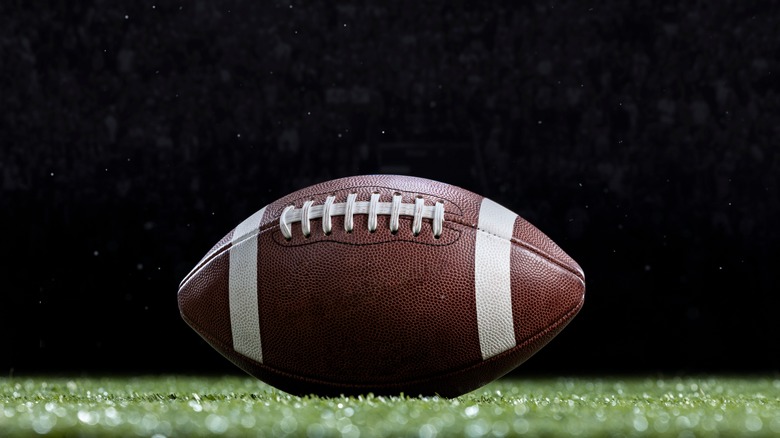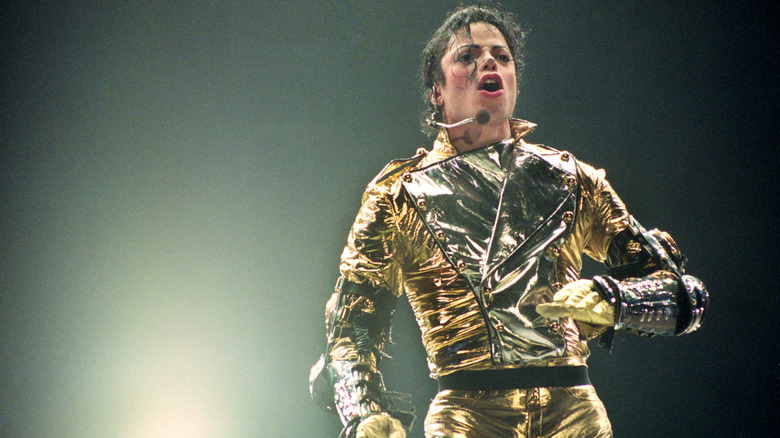What The First Super Bowl Halftime Show Was Really Like
The Super Bowl is one of the biggest commercial and cultural events in the United States. As USA Today reports, it's approaching holiday status, and indeed, many Americans would be glad to see the Monday following the game turned into a federal holiday. Every aspect of the game is an event in itself: the coin toss, the commercials, the National Anthem — and that's just off the field. The halftime show is also a huge deal, with top-tier entertainers (albeit some in the twilight of their careers) entertaining the fans between the first and second halves of the game.
The first Super Bowl, held January 15, 1967, checked off none of those boxes (via Britannica). It wasn't even called the Super Bowl! It was simply called the AFL-NFL World Championship Game, a title it held for its first few iterations. And it was hardly a big event — as Bleacher Report notes, tickets went for a measly $12 (or about $108 in 2022 dollars, per the Bureau of Labor Statistics), and the game didn't even sell out.
The halftime show was equally low-key. Instead of having top-tier entertainers put on a dazzling spectacle, they had ... college marching bands. Long story short, but for a couple of stunts (popular at the time) and a B-list (for the time) entertainer, it wasn't very different from what a spectator would see at a college game, according to Parade.
A College Marching Band Entertained The Crowd
Let's not diss the college marching band halftime show too hard. When done right, such a performance can be exhilarating, but let's not kid ourselves — the difference between such a performance and a (albeit brief) concert by Snoop Dogg and Eminem is the difference between apples and oranges.
Nevertheless, back in 1967, when the game had comparatively little name recognition and considerably less money in the budget, the leagues turned their attention toward the college game and hired the University of Arizona Symphonic Marching Band as the headlining act, according to Parade. Another college marching band, that of the HCBU Grambling State University, was on the undercard; they were joined by guest trumpeter Al Hirt, a popular jazz musician at the time. That an HCBU marching band appeared was actually rather significant, considering the racial tensions at the time, particularly in Los Angeles, where the game was played. A local high school performing group, Anaheim High School Ana-Hi-Steppers Drill Team and Flag Girls, and a stunt demonstration of jetpacks rounded out the entertainment, according to FanSided.
In case you were wondering, the theme of the performance (which can be seen here via YouTube) was a look at history, with the band recreating the shootout at the O.K. Corral, among other events.
Two And A Half Decades Of Low-Key Halftime Shows
The Super Bowl has certainly grown over the decades, from being something approaching a non-event in its first iteration, to being, by the 1980s according to The Conversation, effectively an unofficial national holiday.
Even though the Super Bowl was huge by the early days of the Clinton administration, halftime shows up until that point continued to be low-key, according to Footwear News, still relying largely on marching bands. That all changed in 1993, however, when Michael Jackson (above) took the stage as headliner. Aspects of his performance, which included standing in complete silence for two minutes to build anticipation, drew mixed reviews, but nevertheless, he was the turning point. As The Conversation notes, there's a reason the NFL has been, for the past few decades, looking toward top-tier entertainers for the halftime show: not all Super Bowls have been compelling games, and some have been absolute duds.

